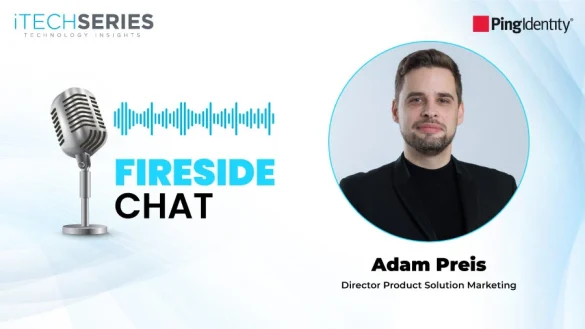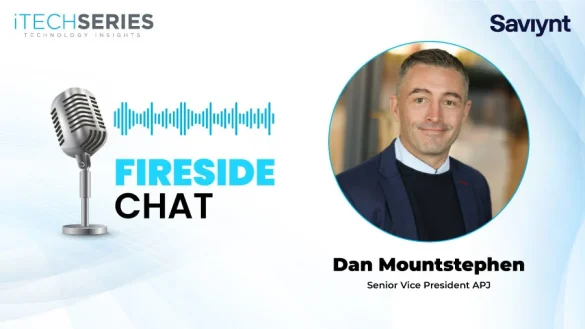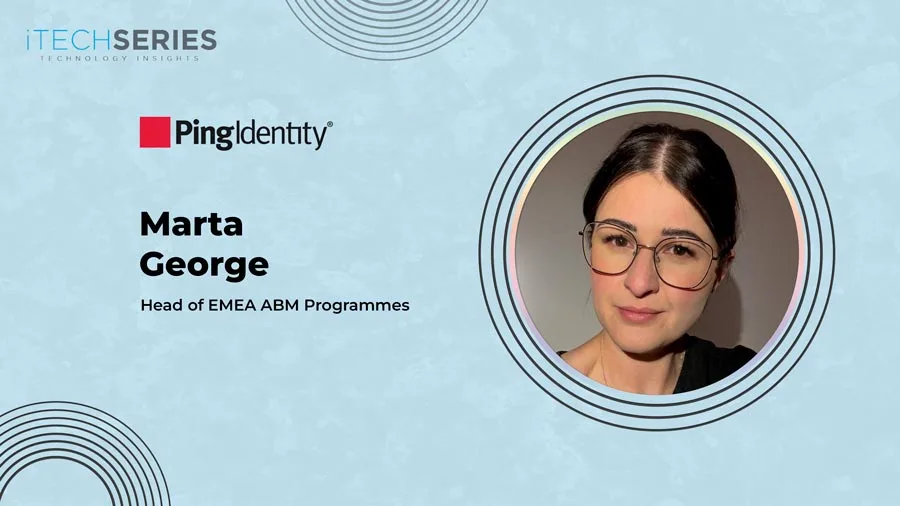Jacqueline Basil, a seasoned product marketer, shares her journey from startup marketer to expert in customer-centric strategies for global enterprises. She discusses the evolution of product marketing in integrated revenue organizations, creating tailored value propositions, and executing successful, data-driven campaigns that drive growth and customer retention.
Jacqueline, it’s great having you for this interview series. Tell us about yourself and your journey as a marketer.
I’ve always been passionate about the intersection of technology, strategy, and customer-centricity. My journey began in the trenches of startups. That’s where I learned about product development, and realized the transformative power of marketing in shaping perceptions, driving adoption, and influencing markets. Over the years, I’ve led high-impact product launches, developed scalable go-to-market strategies, and driven cross-functional alignment in both startups and global enterprises. Today, I specialize in turning complex solutions into compelling narratives that resonate with diverse audiences.
How has the role of product marketing evolved within the context of an integrated revenue organization?
Product marketing is no longer just a support function. It has become a strategic driver of growth. In an integrated revenue organization, product marketing serves as the orchestrator, aligning product roadmaps with customer needs, competitive intelligence, and revenue goals. It’s no longer about creating a one-size-fits-all pitch; it’s about enabling dynamic, data-driven strategies that empower sales teams, accelerate deal velocity, and improve customer retention. This evolution demands a proactive approach, leveraging advanced analytics, personalization technologies, and continuous feedback loops.
“Product marketing has evolved from a support function to a strategic growth driver, orchestrating product roadmaps, customer needs, and competitive insights to align with revenue goals.”
What approach do you take to create and share customized product value propositions for different customer segments?
I use a structured, data-informed approach that is based on the Value Proposition Canvas by Alexander Osterwalder.
1. Define personas: Use behavioral, and psychographic data to define precise customer personas.
2. Customer-centric research: Conduct deep-dive interviews and leverage tools like NPS surveys, CRM insights, and social listening to uncover unique pain points.
3. Value-based messaging: Develop propositions that emphasize ROI and impact, tailored to each persona. For example, an enterprise CTO may prioritize regulatory compliance, while an SMB might value cost-effectiveness.
4. Channel-specific customization: Deliver the message where it matters—through webinars, account-based marketing, or self-serve resources.
Could you share an example of a marketing campaign that was both challenging and successful?
One campaign that stands out involved launching a new application connectivity solution designed to help organizations manage their hybrid cloud environments more effectively. The challenge was twofold: educating the market on the importance of application connectivity and demonstrating how this solution could streamline compliance and troubleshooting efforts.
Challenges Faced:
- Market Education: Many organizations were unaware of the value of application visibility and connectivity.
- Competitive Landscape: Existing tools had a foothold in certain segments, though they lacked our solution’s unique capabilities.
- Cross-Functional Complexity: The solution addressed multiple teams’ needs— network security solutions, and compliance—making it crucial to craft tailored messaging for each audience.
Strategy and Execution:
1. Thought Leadership Campaign
- Published a whitepaper to educate the market on the problem.
- Hosted a webinar featuring an industry expert discussing real-world challenges and how this solution addressed them.
2. Targeted Outreach
- Leveraged account-based marketing (ABM) to target enterprise organizations in regulated industries such as finance and healthcare, where compliance and application uptime were critical.
- Personalized outreach included solution demos focused on their specific use cases, like audit preparation or incident response acceleration.
3. Real-World Demonstrations
- Conducted live workshops where prospective customers could test the solution in simulated environments.
- Developed case studies showing how early adopters reduced troubleshooting time by 50% and improved audit readiness.
Results:
The campaign surpassed expectations by driving a 40% increase in qualified leads within the first quarter, securing enterprise accounts in highly regulated industries.
What are some of the cloud network security product adoption challenges and opportunities in the Israeli market?
When it comes to the Israeli market, we’re not just talking about adoption but also innovation. That’s where things get really interesting. Sure, we’re facing some of the same hurdles as other tech-savvy markets worldwide, but it’s how we’re tackling these challenges that set us apart. First off, we’ve got this massive shortage of cybersecurity experts. It’s a global issue, but in Israel, it’s particularly felt given our position as a cyber powerhouse. Then there’s the whole hybrid environment complexity. 80% of organizations are crying out for security solutions that can handle threats across both cloud and on-prem setups. It’s not simple stuff. Add to that the regulatory maze we’re navigating. Executives are pulling their hair out over regional and global compliance issues. And let’s not forget about data residency and latency. Before we got our local cloud regions up and running, storing data offshore was seen as a major security risk. These challenges only push the Israelis to innovate in ways we never thought possible.
Despite the challenges posed by the war, Israel’s cybersecurity industry has demonstrated exceptional resilience and continued to thrive. The conflict has made the ecosystem more robust, particularly in the cyber and AI sectors.
1. Increased demand for cybersecurity solutions: The conflict has heightened awareness of cyber threats, driving greater adoption of cloud network security and firewall management products. There has been a surge in cyber-attacks targeting various industries since the conflict began, emphasizing the critical role of Israel’s cybersecurity sector.
2. Investment boost: The war has sparked renewed interest from global investors in Israeli cybersecurity startups. In 2024, 14 cybersecurity startups focusing on network and cloud security raised funding rounds in Israel, compared to only 6 such rounds in 2023.
3. AI integration: The conflict has accelerated the integration of AI in cybersecurity solutions, enhancing defence mechanisms against evolving cyber threats. This trend is expected to continue, with AI adoption allowing for more robust protection against risks in cloud environments.
4. Focus on long-term growth: The war has prompted cybersecurity founders to shift their focus towards building more sustainable, long-term companies rather than seeking quick exits. This approach is likely to strengthen the overall cloud security product ecosystem in Israel.
5. Talent mobilization: The conflict has led to the mobilization of tech employees for military service, which initially strained the sector. However, this has also resulted in a transfer of military-grade cybersecurity expertise to the private sector, potentially enhancing cloud security product development.
6. Government initiatives: Local initiatives, such as the Fast Track program by the Israel Innovation Authority, have played crucial roles in supporting startups affected by the conflict, ensuring continuity in product development and adoption.
7. International collaboration: The war has highlighted Israel’s cybersecurity capabilities on a global scale, potentially leading to increased international partnerships and adoption of Israeli cloud security products.
Overall, while the war has presented significant challenges, it has also acted as a catalyst for innovation and growth in Israel’s cloud security product sector, positioning the country for continued leadership in this field.
How do you leverage the power of events marketing as a potent tool to drive product awareness and demand?
Events marketing is like throwing an amazing party where your product is the guest of honor. It’s about creating an experience that gets people talking, sharing, and most importantly, remembering you. When you host an event, you’re not just selling a product, you’re telling a story. You want attendees walking away thinking, “Wow, that was incredible!” For instance, I always recommend creating interactive moments. Don’t just demonstrate your product – let people play with it, feel its potential, and understand its magic.
Make every activity personal and memorable. From the giveaways to the interactive demos. Go further, think about attendees. We were once placed in the middle of a huge hall and we set up a crepe stand. After walking for hours, people were drawn to the smell of free crepes. We had more people interacting with our demos than we ever had in any event.
Use social media to amplify your reach, bring in industry influencers who can vouch for your credibility, and offer something unique that attendees can’t get anywhere else. Maybe it’s an exclusive preview, a limited-time offer, or a hands-on workshop that gives them real, tangible value.
Use technology, augmented reality demos, gamification, and live polling – these aren’t just cool tricks, they’re engagement multipliers. They transform a standard product showcase into an immersive experience that sticks in people’s minds long after the event ends.
Bottom line: Great event marketing isn’t about hard selling. It’s about creating connections, sparking conversations, and letting your product’s potential speak for itself. When done right, you’re not just generating leads – you’re building a community around your brand.
As a product marketing leader, how do you gather and use customer feedback to improve go-to-market strategies?
As a product marketing leader, customer feedback is like gold for improving our go-to-market strategies. Here’s how I approach it. Always make it super easy for customers to share their thoughts. I’ve used a mix of surveys, interviews, and even social media listening to capture feedback at various touchpoints. The key is to create a continuous feedback loop, not just a one-time thing.
Once you have that feedback, don’t just let it sit there. Use a structured approach to analyze and categorize it. This helps you identify patterns and prioritize what needs attention. For instance, if we’re seeing a trend in feature requests or pain points, that’s going to directly inform our product positioning and messaging.
One thing I’ve found crucial is acting on feedback quickly. It shows customers you’re listening and helps the teams stay agile. We might adjust our value proposition, tweak our targeting, or even influence the product roadmap based on what we’re hearing from customers.
What KPIs do you use to assess the effectiveness of your product marketing initiatives, and which ones do you prioritize?
I’m a big believer in focusing on what really moves the needle. I would prioritize KPIs like:
1. Product adoption rate: This is the big one. If our marketing is on point, we should see healthy adoption numbers.
2. Time to value: How quickly are customers realizing the benefits we promised? This speaks volumes about our messaging and onboarding.
3. Net promoter score (NPS): It’s a classic for a reason. It tells us if we’re creating advocates.
4. Feature adoption: Are customers using the key features we’re promoting? This helps us refine our product storytelling.
I also keep a close eye on sales cycle length and win rates. These tell us if our marketing is effectively supporting the sales process.
How do you ensure that your team members are motivated and aligned with the broader GTM objectives?
Aligning the team with our GTM objectives is all about creating a shared vision and keeping everyone in the loop. I’m a big believer in setting clear, measurable goals that directly tie into our broader strategy. Everyone must understand how their work fits into the big picture. To make this happen, we use a shared dashboard where the team can track progress in real-time. Transparency is key. I have one weekly meeting that has a very clear agenda to discuss our wins, challenges, and next steps. It keeps us all on the same page.
One thing that’s been really effective is creating cross-functional teams with people from product, marketing, and sales. It breaks down silos and gets everyone collaborating. And when we hit a milestone or nail a campaign, we make sure to celebrate together. It’s all about recognizing that collective effort. At the end of the day, motivation comes from feeling valued and understanding your impact. I always make it a point to highlight how each team member’s work directly influences our GTM success. It’s not always smooth sailing, but when all these practices come together, it’s incredible how it drives our growth and keeps our product marketing efforts customer-centric, data-driven, and totally in sync with our broader business goals.
About Jacqueline Basil
Jacqueline Basil is a skilled product marketer, with a strong passion for the intersection of technology, strategy, and customer-centricity. With experience in both startups and global enterprises, Jacqueline has led impactful product launches, developed scalable go-to-market strategies, and aligned cross-functional teams. Known for turning complex solutions into compelling narratives, she excels in simplifying intricate concepts and creating messaging that resonates with diverse audiences, driving adoption and market success.











